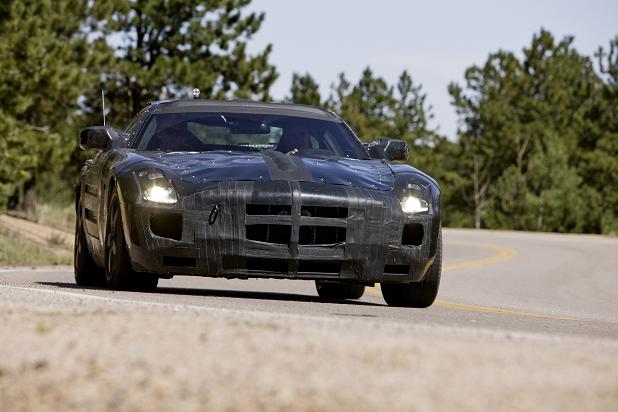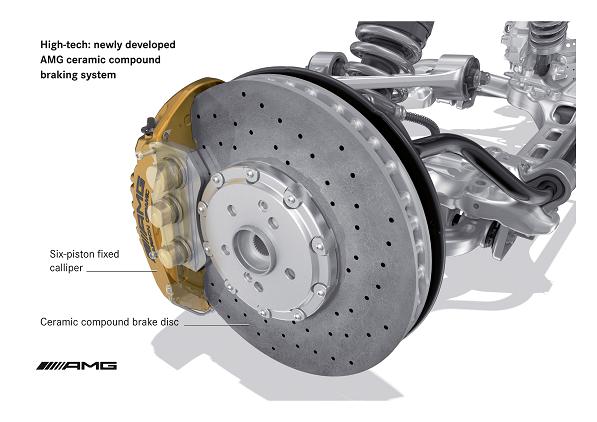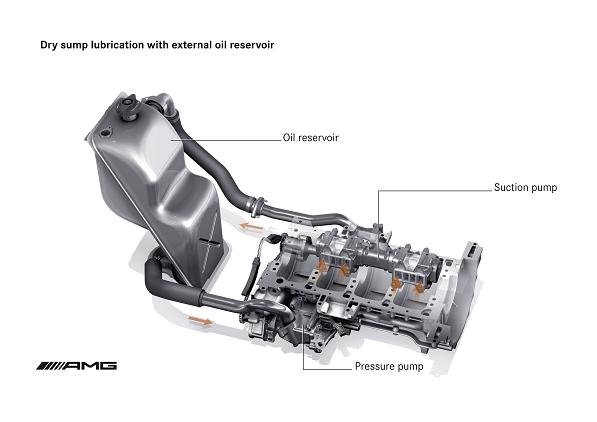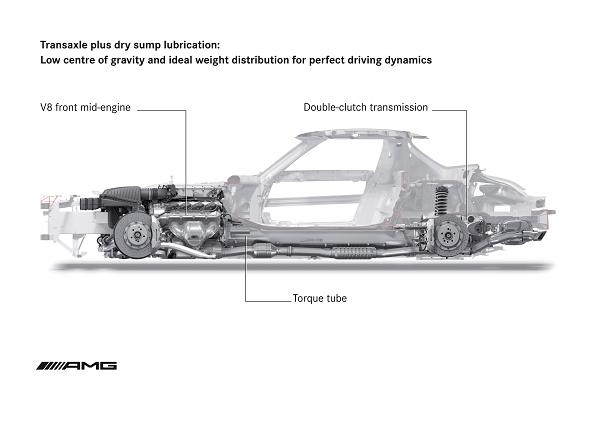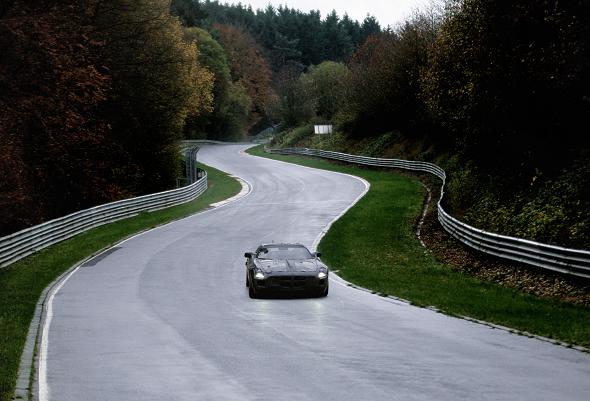Mercedes-Benz SLS AMG
The proper research and development of a product usually involves a lengthy process of long hours of concept brainstorming, then a long line of concept designs, followed by the actual designing stage, from which prototypes are produced to evaluate various performance parameters. As the prototypes get more advanced, the conditions they are tested in mimic real world operations more and more closely.
Here is where things get a little complicated for the car world. Unlike products like, say, computers or hand phones, where full testing can be done entirely in the sealed confines of the company’s R&D lab, prototype cars must be tested on roads because that’s where they’re used. But, that also means exposing your upcoming products to the prying eyes of your competitors and the public.
So, somewhere along the line, some car manufacturer thought of the idea of sending their prototypes out into the world heavily disguised under a cloak of tape and black cloth. This then gave rise to ‘spyshots’, where photographers catch these mysterious cars in action, then have the pictures sold to the highest bidder – usually magazines. The editors of these magazines then splash these pictures across their pages under banners that read something like, “Sighted: The Next 5-series!”
When a model is eagerly anticipated by the public, like how the Proton Exora has been, every spyshot taken further adds to the buzz. Not too long ago, Mazda took full advantage of this themselves released ‘spyshots’ of their upcoming Mazda3 under taped disguise. Now, Mercedes is also following this route as part of their marketing activity to build anticipation for a supercar scheduled for release in 2010 – the SLS AMG.
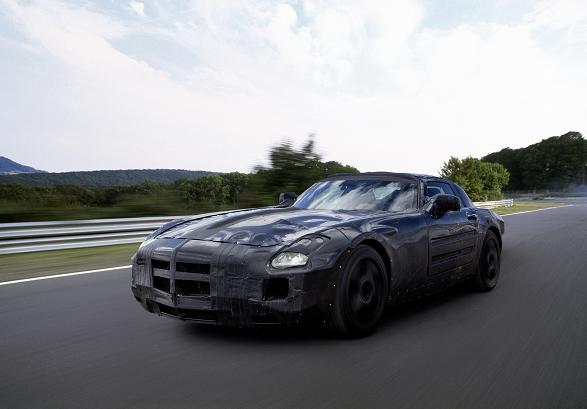
Under wraps: the Mercedes SLS AMG.
Development
The SLS AMG is to be the first car developed in-house by the famous AMG division of Mercedes-Benz. Dubbed as the new Gullwing from Mercedes, the folks from AMG have been working on this project together with specialists from the Mercedes Technology Centre in Sindelfingen since late 2006. Built on the concept of an ‘uncompromising sports car’, this is also going to be the first Merc to feature extensive aluminium construction.
Until now, all Mercs wearing AMG badges have been engineered out of existing models from the parent company’s stable. So, for the first time, with a clean slate to start from, the AMG engineers must have been licking their lips with anticipation. The specs sheet show as much: 6.2-litre V8, 571 hp, dry sump lubrication, seven-speed rear-mounted twin clutch transmisison, 48:52 front/rear weight distribution. The key words that continuously appear in the press release are “light weight” and “low centre of gravity”.

Mercedes-AMG has been working on this since late 2006
Body
For the first time, AMG’s responsibility in styling their product are going beyond spoilers and skirts – they will be designing the entire car. Although the camouflage still effectively keeps most styling details, the overall body shape and proportions already suggest something very different from your neighbour’s old W124 230E. The front view bears more than a passing resemblance to the Ferrari 599 GTB Fiorano - with its longish headlights and a gaping radiator flanked by a pair of smaller intake vents.
Like the outgoing SLR, the engine of the SLS is mounted just behind the front axle. This gives rise to its elongated bonnet styling with a short front overhang, and sees that the passenger compartment only occupies the rear half of the wheelbase. As mentioned earlier, the two passenger cockpit is accessed by a pair of ‘gullwing’ doors. The ‘spyshots’ only show glimpses of the interior, from which we can make out a very low seating position, red leather trim, brushed metallic centre console finish, a very short gear lever and steering mounted paddle shifters.
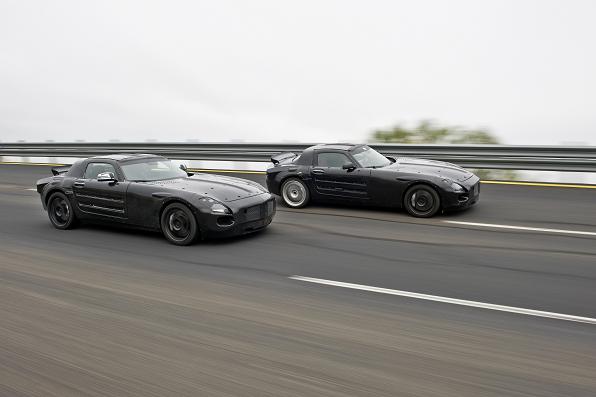
A pair of prototypes undergo testing side-by-side. Camouflaging team mocks BMW kidney grille with disguises here.
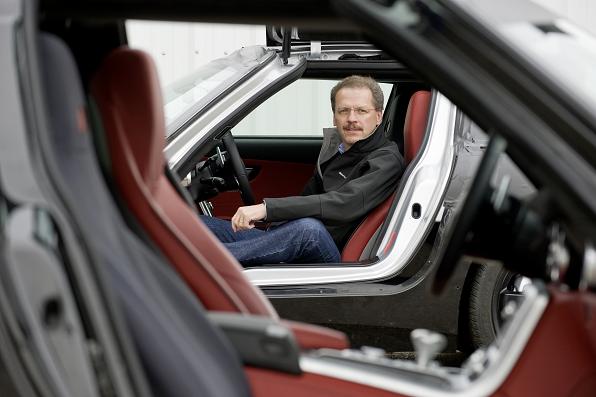
A glimpse of the interior with Volker Mornhinweg, Chairman of Mercedes-AMG. Note hinges for gullwing doors on top of picture
The rear shots of the car revealed precious few details. There seems to be a pair of integrated exhaust pipes on either side of the bumpers, and also a very high shut-line for the boot. The taillights are unlikely to look anything like those you would see on the picture below. I also trust that the horrendous spoiler that you see in some of these pictures would not make it to production. It has to be a joke by the camouflaging team.

Once again, you wouldn’t expect this to be a Mercedes. Not with a spoiler like that, anyway.
Chassis
While Mercedes continues to keep us guessing on the styling details, they were more forthcoming with information on what lies under the skin of the SLS. For the first time, Mercedes is embracing aluminium as the primary building blocks of its cars. The body panels and chassis features extensive usage of this strong but light weight metal – to meet the targetted 1,620kg kerb weight.
Mercedes also assures us that while this car is lightweight in terms of mass, it is no lightweight in terms of chassis strength and crash protection. The press release from Merc shows a pretty impressive looking diagram demonstrating how side impact forces are dissipated around the passenger cell. Placing the engine behind the front axle also has the distinct advantage of allowing the engineers to use the entire front over hang area as a big crumple zone, not to mention enormous benefits in terms of weight distribution.
Another image was also released, a computer simulation of the car’s chassis in an offset front impact. It shows that despite extensive damage to the engine compartment, and also some of the impact forces transmitted to the rear axle via the transaxle, the passenger cell remains relatively undamaged. Though the simulation parameters were not given, it still appears to be a credible performance.
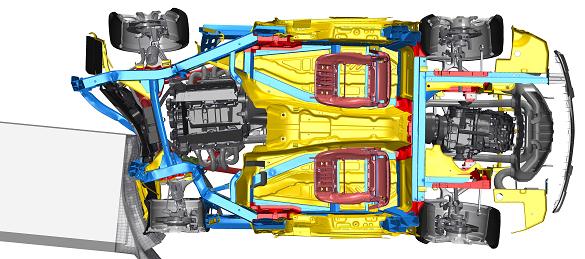
Computer simulated crash test. Note how the transmission and rear axle also receive impact forces transmitted via the transaxle.
Ride & Handling
Each of the four wheels are held in place by aluminium forged double wishbones. On paper, this provides the dream combination of low unsprung weight (thanks to the usage of aluminium), with the already legendary handling qualities of the double wishbone setup. Complementing the double wishbone setup is a three-stage ESP system that allows the driver to set, at the push of a button, the system to ESP ON, ESP SPORT, or ESP OFF.
Stopping power is provided by a quartet of cross-drilled vent discs made from a ceramic composite compound, which has the combined advantage of reduced weight and higher operating temperatures. As of now, Mercedes only intends to offer these discs as options, but nothing is stopping them from changing their mind to make these items as standard offering come launch time.
Powertrain
Powering the SLS will be a heavily reengineered version of the M156 which is currently powering all the various Mercedes 63 AMG vehicles. The V8 motor, dubbed M159 for this application, continues to displace 6,208cc, but Mercedes has completely reworked the intake system, valve train and camshafts. Additionally, wherever possible, components are upgraded to use higher strength but lower weight material.
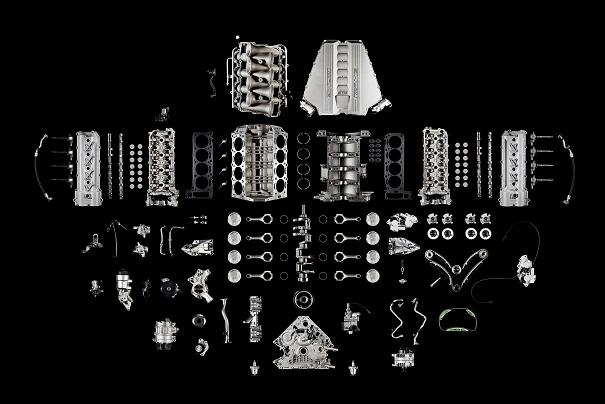
Mercedes heavily reengineered M156 to produce the M159
The most crucial change comes in the introduction of dry sump lubrication, which enables the engineers to mount the engine as low as possible in the vehicle, keeping in line with the SLS’ prevailing theme of a lowered centre of gravity. From the external oil reservoir, oil is pumped into the engine via an on-demand high performance pump to ensure optimum lubrication.
All the various improvements are translated on the specs sheet as a 46hp and 20Nm output increase from the M156, as the M159 churns out 571hp @ 6,800rpm and 650Nm @ 4,750rpm. However, despite its 6,208cc displacement, Mercedes markets this engine as a 6.3-litre unit in compliance of German tax laws requiring engine capacities to be rounded UP to the nearest 100cc.
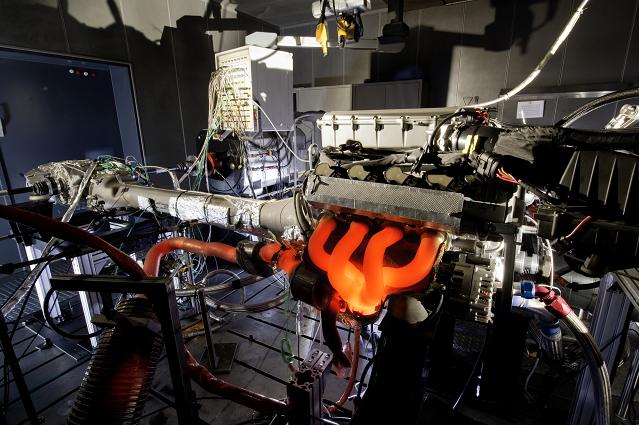
High-revving “6.3-litre” V8 good for 571hp @ 6,800rpm and 650Nm @ 4,750rpm
The engine’s outputs are sent to the rear transaxle by means of an ultra-light carbon fibre shaft housed inside what Mercedes calls a torque tube. At the receiving end of the torque tube is Merc’s first attempt at a dual-clutch transmission. The seven speed unit boasts, as per Merc’s claims, ‘fast gear changes with no loss of tractive force’, and also an integrated mechanical differential lock for optimum traction.
This powertrain setup, according to provisional claims by Merc, is good enough to propel the SLS from rest to 100kph in an eye-blinking 3.8 seconds, before maxing out at 315kph. The front-mid engine with rear transaxle layout has allowed AMG to achieve a balanced 48:52 front/rear weight distribution. Together with the low centre of gravity and double wishbone setup, most of the bases are covered to ensure that the SLS would have at least above average handling characteristics.
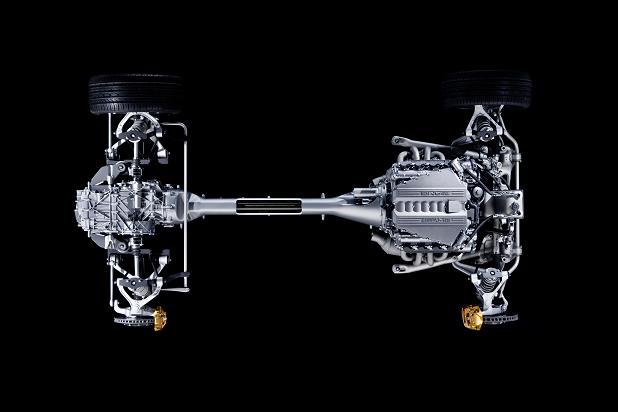
Powertrain setup propels SLS to 315kph top speed, while achieving 48:52 weight distribution.
Countdown: T minus 1 year
The SLS represents many firsts for Mercedes. It’s the first car developed from scratch by AMG, the first to use all-aluminium construction, and the first to feature a twin-clutch gearbox – nevermind its German rivals have already begun using these technologies extensively in certain models. Nevertheless, the SLS remains an exciting product to wait for.
Assuming the current credit crunch does not affect the SLS’ development, Mercedes anticipates the conclusion of testing programmes by the end of 2009, with launch pencilled for spring 2010. It’s still a while more, but whatever details that Mercedes has released thus far indicates that the new Gullwing would be worth the wait.




